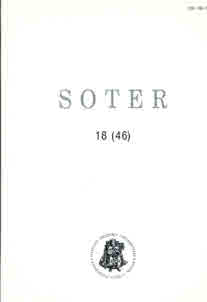JAV lietuvių bažnytiniai chorai – dvasingumo ir tautiškumo puoselėtojai
Lithuanian church choirs in the USA as preservers of spirituality and nationality
Author(s): Danutė PetrauskaitėSubject(s): Christian Theology and Religion
Published by: Vytauto Didžiojo Universitetas
Keywords: bažnyčia; parapija; choras; vargonininkas; muzika; koncertas; dainų šventė; church; parish; choir; organist; music; song festivals;
Summary/Abstract: The mass emigration of Lithuanians to the United States began in the end of the 19th century. Lithuanians, who found their new shelter far away from their homeland, tried not to lose their national identity: native language, national music, customs, and the catholic religion. They donated their hard-earned money for the building of Lithuanian churches. They hired church organists, established parish choirs, and developed a wide range of musical activities. The main aim of Lithuanian church choirs was not only to participate in religious services, but also to develop the need for national spirituality. Therefore, those choirs could not limit themselves only to the field of religious music. They had to be open for publicity, thus earning more attention from fellow Lithuanians. The most common activities were concerts. Choir leaders built their repertoire from religious and secular music compositions. Because there was an expectation, that the works of Lithuanian composers should be performed, choirs mostly performed the musical compositions by Juozas Naujalis, Česlovas Sasnauskas, Mikas Petrauskas, and other composers, who lived abroad. Religious music, rather than secular, was more familiar to the church choirs. This music, which exceeded the frames of liturgical service, started being performed in so called sacred concerts. Those concerts later were called religious concerts. To have a few religious concerts per year for church choirs was the matter of prestige. They were devoted not only to religious festivities, but also to the dates, which were tragic to Lithuanian nation. In the beginning of the 20th century, church choirs used to be invited to perform at the meetings of various patriotic societies, which had the aim to help Lithuania to regain its independence. Choir songs helped to strengthen patriotic feelings. This way the church choirs became more integrated into secular life. They never refused to represent the name of Lithuania in various choir contests, held by Americans. They also participated in international festivals, radio programs, picnics, and masquerades, beauty contests of Lithuanian girls, organized performances of pantomime, and not complicated drama or operetta performances. The concert life was the most intensive during the period between the World Wars. After the World War II there appeared more strong secular choirs. Because of that, and also of church organists getting old, church choirs had to limit themselves only to the religious services. But some of them, because of new and professional choir directors, were continuing the tradition of religious music concerts. In the beginning of the 20th century Lithuanians started to hold concerts of united church choirs. These were the beginnings of the national song festivals, and they attracted very many people. One of the first united choir concerts was held on the 24th of September, 1914, in Chicago.
Journal: SOTER: religijos mokslo žurnalas
- Issue Year: 47/2006
- Issue No: 19
- Page Range: 153-175
- Page Count: 23
- Language: Lithuanian

